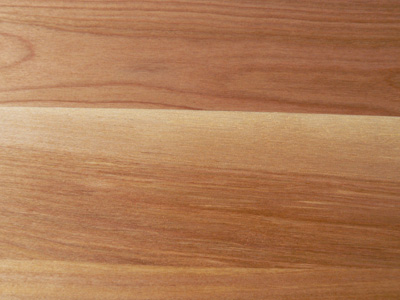The Tree: The fully grown tree is reported to be often 70 to 100 feet (21 to 30 m) in height and 30 inches (80 cm) in diameter. Birch bark is reported to be full of natural waxes that render it waterproof. The tough and durable bark is also reported to remain in the soil long after the inside of the tree has rotted away. The birch tree is reported to be rather short-lived, and rarely exceeds 80 years of age.
Principal Uses: In addition to wood flooring, birch is commonly used in furniture, millwork, wooden toys, paneling, doors, veneers, interior finishing, windowsills, cutting surfaces, drumsticks, violin bows, and wooden novelties.
Appearance: The sapwood of yellow birch ranges from pale white to creamy yellow, while the heartwood tends to be a light-reddish brown with a red tinge. By contrast, the sapwood of sweet birch is light-colored, whereas the heartwood is dark brown with a red tinge. Birch wood has an even texture with a straight, closed grain. Occasionally, boards may show curliness in the grain as well as some wavy figuring. It is among the most featureless of all North American hardwoods; but with its natural, pleasing figure, it makes for very attractive furniture and flooring. Birch has a small degree of luster, making it seem almost dull in appearance.
Properties: Birch is a very heavy, strong, durable wood. It is hard and stiff, with excellent shock-resistance.
Workability: With its good machining qualities, birch wood sands satisfactorily and has excellent holding ability when nailed.
Grain: The grain is reported to be typically straight, but some logs may contain wavy or curly grain. Birch is described as one of the most featureless of all North American hardwoods, but it has a natural pleasing figure which makes it very attractive for furniture. Annual rings, grain and pores are often indistinct, and a uniform scattering of fine pores or vessels throughout the material gives it a dull and lusterless appearance.
Odor: There is no distinctive odor or taste.
Distribution: Yellow birch is reported to occur in Lebanon, New Brunswick, Newfoundland, Nova Scotia, Ontario, Prince Edward Island, and Quebec in Canada. Its growth range in the United States is reported to be Connecticut, Georgia, Indiana, Kentucky, Massachusetts, Maryland, Maine, Michigan, Minnesota, North Carolina, Delaware, Great Smoky Mountain National Park, Iowa, New Hampshire, New Jersey, New York, Ohio, Pennsylvania, Rhode Island, South Carolina, Tennessee, Tennessee Valley, Illinois, Virginia, Vermont, Wisconsin, and West Virginia. The tree is usually found growing with other hardwoods and conifers in cool moist upland soils, including mountain ravines. Birch is also reported to grow in Northern Europe and Northern Asia. The tree is described as very hardy and can even survive at the polar regions. Some dwarf races of Birch are reported to survive in the Arctic tundra, on the perma-frost soils that are usually frozen over during most of the year.
Other Interesting Information: The oil extracted from Birch bark contains a chemical used to treat rheumatism and inflammations. Native Americans stretched birch bark on their canoe frames and used the wood for their arrows. Birch is also popular as an ornamental tree and has gained the nickname "Mother Tree" because they have been planted at the White House to honor the mothers of U.S. presidents.










Log In